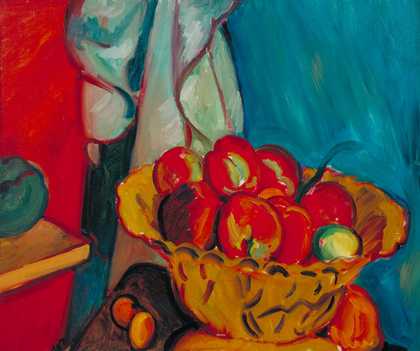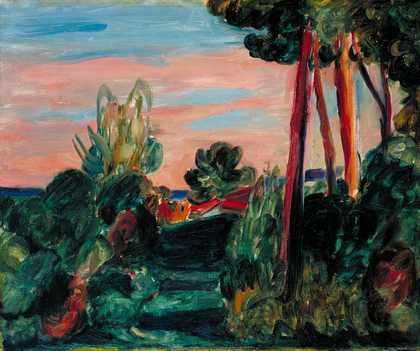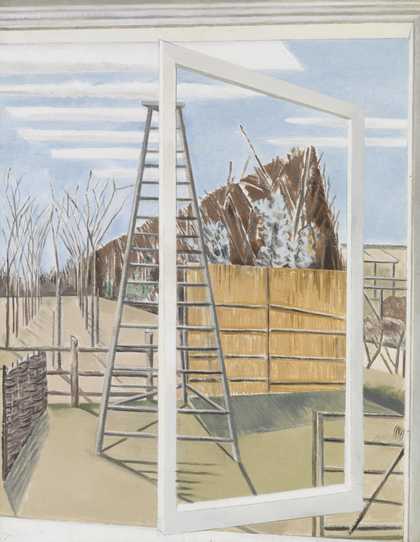Matthew Smith was born at Halifax, in the West Riding of Yorkshire, in 1879. His family belonged to the puritanically austere and energetic industrial middle class.
He had reached his middle thirties before he began his life’s work as a painter, and even then his beginnings were tentative.
It was not until the middle 1920s that Matthew Smith evolved in all essentials both the way of seeing and the highly individual method appropriate to its expression that he has developed consistently ever since.
It is noteworthy that his first one-man exhibition at the Mayor Gallery in April 1926 was followed by the immediate recognition of his talents by a no less severe critic than Roger Fry in what was the first attempt at a considered estimate of his work.
The highly personal language of painting which he evolved in the 1920s has varied extraordinarily little. In a detailed study there would be fluctuations of style to be recorded, and periods when nudes, faces, flowers, fruit or landscapes absorbed his interest. There is also an increasing emphasis upon bold and emphatic linear rhythms, but this emphasis is already pronounced by 1925 in, for instance, Femme de Cirque.
If we compare, for example, Flowers of about 1920, the earliest example of his mature style, with his Peaches of 1937, this change is evident, but it is by similarities rather than differences that we are impressed.
Nor, since he found his mature style so slowly and in the face of so much difficulty, has he altered his technical procedure. Almost invariably he paints direct from his subject, only very rarely making use of preliminary studies. First he draws in his composition on a blank canvas in thin paint (well diluted with oil) so that it may easily be washed off.
Matthew Smith is a passionate and an instinctive painter, naturally impatient of rules and suspicious of them as tending to compromise individuality; and, as already noted, his grasp of structure fluctuates. ‘His linear drawings’, Paul Nash once observed, ‘hardly suggest the consummate painter he is.’
John Rothenstein



